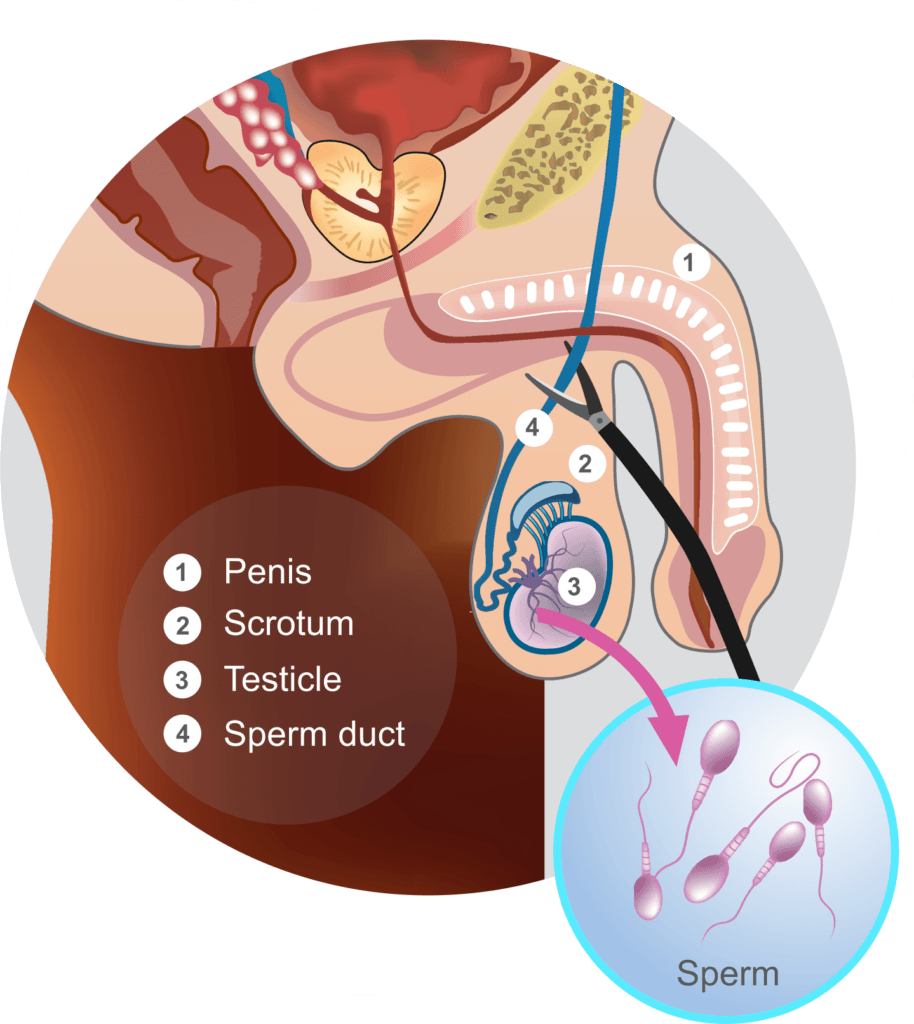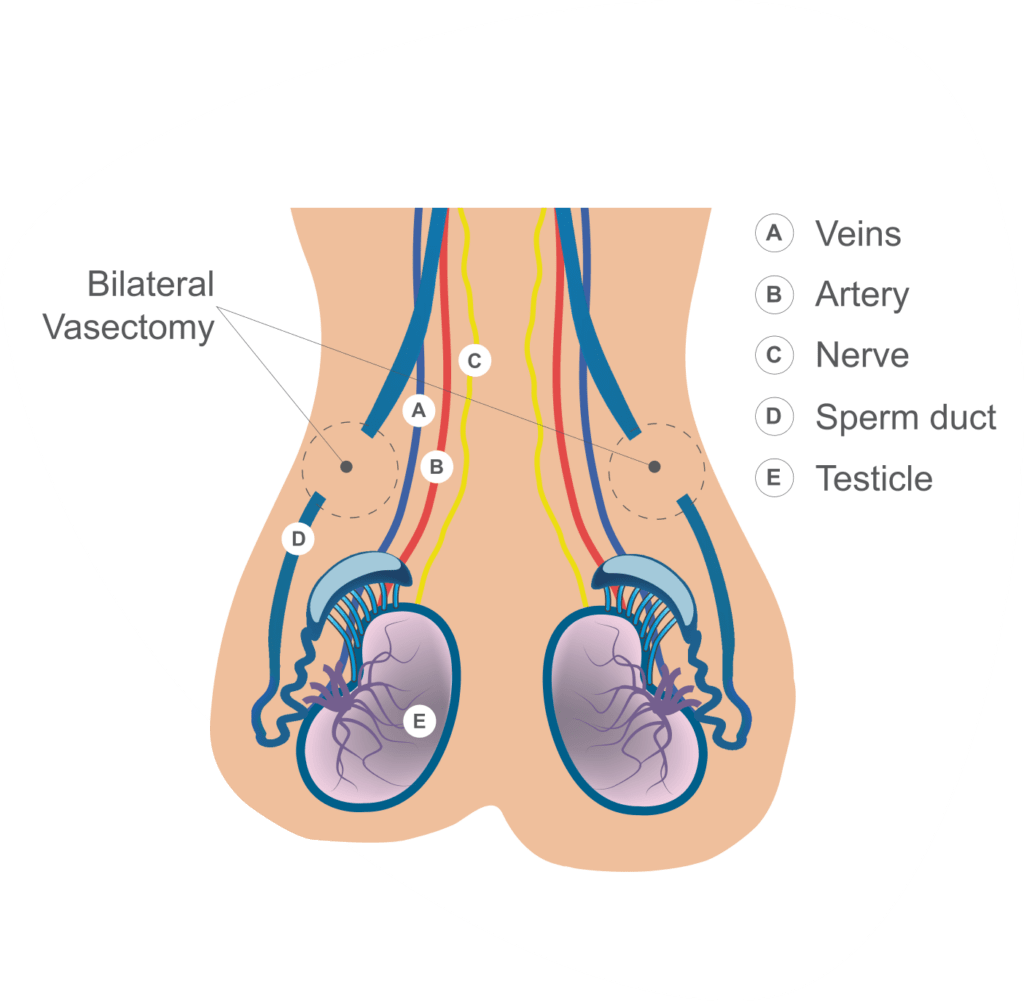Vasectomy is a surgical procedure performed on men as a permanent form of contraception. It involves cutting or sealing the vas deferens, the tubes that carry sperm from the testicles to the urethra.
By interrupting the flow of sperm, vasectomy prevents pregnancy. It is a highly effective and safe procedure with a low risk of complications. Vasectomy does not affect sexual function or hormone production. Vasectomy reversal surgery can be performed should you change your mind, but a successful result is not guaranteed.
Note: Dr Savdie performs vasectomy and vasectomy reversal surgery.


Dr Savdie offers all methods of vasectomy detailed below according to patient preference.
The most commonly requested method tends to be the the in-clinic (same day), no-scalpel method due to convenience.
This technique involves the application of local anaesthesia to completely numb the small procedural area.
A single tiny opening in the scrotum is then created.
Specialised instruments are used to grasp and isolate the vas deferens for cutting and sealing.
This method takes approximately 15-minutes to complete, after which the patient can go home. The opening in the scrotal skin is so small that rapid healing will occur without the need for stitches.
This method suits those that would prefer to have sedation so you are ‘asleep’ and not aware the procedure is being done.
In this method, the surgeon makes one or two small incisions in the scrotum to access the vas deferens. The vas deferens is then cut, a small section may be removed, and the ends are sealed or tied. The incisions are closed with stitches or adhesive.
Instead of cutting and sealing the vas deferens, small clips or rings can be placed around the tubes to block the sperm flow.
This method is less commonly used compared to the conventional or no-scalpel techniques.
Vasectomy reversal surgery is a procedure to undo a prior vasectomy. During the procedure, a surgeon reconnects each tube (vas deferens) that carries sperm from a testicle into the semen. After a successful vasectomy reversal, sperm are again present in the semen, and you may be able to get your partner pregnant.
There are two methods: microsurgery (using a microscope that offers ~40x magnification) and ‘open’ surgery that leaves a large scar.
Dr Savdie performs the microsurgical method.
After a vasectomy, it is important to follow post-operative instructions, including rest, pain management, and avoiding strenuous activities.
It takes a few months of ejaculations to clear any remaining sperm from the reproductive system, so alternative contraception methods such as condoms are advised until a sperm test confirms the absence of sperm.
It is crucial to discuss the decision of vasectomy with a healthcare professional who can provide detailed information, assess personal circumstances, and address any concerns.

Dr Savdie is a highly-experienced Sydney-based urologist and uro-oncology surgeon specialising in minimally-invasive robotic surgery and laparoscopic surgery.
He consults and operates at multiple leading private and public hospitals around the Eastern Suburbs.